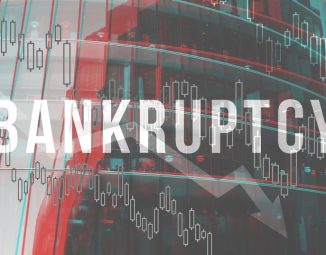Just Hold On: The Supreme Court Rules That a Creditor’s Mere Retention of Property Lawfully Seized Prepetition Does Not Violate the Automatic Stay. . . Maybe.
In a case with significant implications for the practices of the lending industry, the Supreme Court unanimously ruled in early 2021 that a secured creditor that lawfully repossesses collateral does not have an affirmative obligation under the Bankruptcy Code’s automatic stay provisions of 11 U.S.C. §362(a)(3) to return that property to the debtor or trustee immediately upon the filing of a subsequent bankruptcy petition.¹ This ruling appears to relieve creditors of an affirmative obligation to return repossessed property to the estate and shifts the burden to the debtor or trustee to initiate proceedings with the bankruptcy court to compel a turnover of the property.
The automatic stay provisions of §362 are among the most fundamental debtor protections of the Bankruptcy Code. Immediately upon the filing of a bankruptcy case, the automatic stay, as its name suggests, imposes an injunction upon creditors from commencing or continuing acts against the debtor or the debtor’s property. Prior to the Supreme Court’s recent ruling in the City of Chicago v. Fulton, some courts interpreted the automatic stay to impose an affirmative duty on creditors to return to the debtor collateral repossessed prior to a bankruptcy filing.
Concluding that §362(a)(3) only “prohibits affirmative acts that would disturb the status quo of estate property” pending further order of the bankruptcy court and “that mere retention of property does not violate the [automatic stay],” the Supreme Court resolved a circuit split on the issue that had previously caused uncertainty among lenders. The Second, Seventh, Eighth, Ninth and Eleventh Circuits imposed an affirmative duty upon creditors to turn over property seized prepetition, while the District of Columbia, Third and Tenth Circuits held that the mere retention of estate property after the filing of a bankruptcy petition does not violate §362(a)(3) of the Bankruptcy Code.
However, as will be discussed in detail below, the scope of the ruling has been called into question by the concurring opinion of Justice Sotomayor and subsequent rulings by the Seventh Circuit on remand, casting a degree of doubt for the time being upon creditors who choose to retain seized collateral until some further action is taken before the bankruptcy court.
The Immediate Consequences of a Bankruptcy Petition
The filing of a bankruptcy petition has some immediate consequences. First, a “bankruptcy estate” is automatically created upon the filing of a petition that, with certain exceptions, comprises “all legal or equitable interests of the debtor in property as of the commencement of the case.” 11 U. S. C. §541(a). Often times at the beginning of a case, a debtor may have a “legal or equitable interest” in property that is in the lawful possession of a creditor or a third party. The turnover provisions of §542 provide, with some notable exceptions, that an entity in possession of property of the bankruptcy estate “shall deliver to the trustee, and account for” that property.
Second, the filing of a petition automatically “operates as a stay, applicable to all entities,” of efforts to collect prepetition debts outside the bankruptcy forum. 11 U.S.C. §362(a). Collection efforts prohibited by the stay include “any act to obtain possession of property of the estate or of property from the estate or to exercise control over property of the estate.” 11 U.S.C. §362(a)(3) (emphasis added). This prohibition against exercising control over estate property was the focus of the dispute resolved by the Supreme Court in City of Chicago v. Fulton.
The Facts and Rulings Below.
Owners of vehicles impounded by the City of Chicago for the failure to pay fines for parking tickets and other infractions respectively filed individual Chapter 13 bankruptcy petitions. The City refused their demands for the return of the vehicles until the outstanding fines were paid. The bankruptcy court’s ruling that such refusal violated the automatic stay was affirmed by the Seventh Circuit Court of Appeals which reasoned that by retaining possession of the debtors’ vehicles after the bankruptcy filing, the City had “acted to exercise control” over the debtors’ property in violation of §362(a)(3) and that none of the statutory exceptions of the automatic stay applied.
The Supreme Court Decision
The question before the Supreme Court was whether the automatic stay provisions of §363(a)(3) independently impose an affirmative duty to return property that was lawfully seized prepetition in which the estate has in interest or must turnover occur only upon an adjudication that the requirements of §542 have been established.
In addressing that question, the Court first examined the language used in §362(a)(3) that the filing of a bankruptcy petition operates as a “stay” of “any act” to “exercise control” over the property of the estate, concluding that the most natural reading of these terms is that §362(a)(3) prohibits affirmative acts that would disturb the status quo of estate property as of the time when the bankruptcy petition was filed.
The Court noted that any ambiguity in the text of §362(a)(3) was decidedly resolved in the City’s favor by the existence of the separate provisions of §542 that expressly govern the turnover of estate property. Section 542(a), with two exceptions, provides as follows:
“[A]n entity, other than a custodian, in possession, custody, or control, during the case, of property that the trustee may use, sell, or lease under section 363 of this title, or that the debtor may exempt under section 522 of this title, shall deliver to the trustee, and account for, such property or the value of such property, unless such property is of inconsequential value or benefit to the estate.”
According to the analysis of the Court, construing the automatic stay provisions of §362(a)(3) to apply to the mere retention of property would create at least two serious problems. First, such a reading would make the automatic stay a blanket turnover provision, rendering the turnover commands of §542 largely superfluous. Section 542 expressly governs the turnover of property to the estate and subsection (a) describes the broad range of property that an entity “shall deliver to the trustee.”
Second, affixing a general duty to return collateral to the automatic stay prohibitions of §362(a)(3) would result in a conflict with the exacting turnover provisions of §542. The turnover obligation is not absolute. Section 542 carves out exceptions to the turnover command, and §542(a) by its terms does not mandate turnover of property that is “of inconsequential value or benefit to the estate.” Thus, where those exceptions to turnover under §542 apply, §362(a)(3) would command turnover all the same.
Further, the mandatory turnover provisions of §542 are not self-executing and when the conditions of the statute are met, turnover must be enforced through a judicial proceeding and court order. Creditors have the opportunity to assert defenses to turnover or otherwise obtain adequate protection of their interests under §363 as a condition to relinquishing possession. Reading §362(a)(3) to impose an automatic duty to return collateral repossessed prepetition would collide with the statutory scheme for turnover under §542.
Finally, the Supreme Court reviewed the relevant legislative history of the Bankruptcy Code as supporting its reading that §362(a)(3) does not itself impose an affirmative duty upon a creditor to return collateral lawfully repossessed prepetition. The Bankruptcy Code originally included both §362(a)(3) and §542(a), but the former provision lacked the phrase “or to exercise control over property of the estate.” When that phrase was later added by amendment, Congress made no mention of transforming §362(a)(3) into an affirmative turnover obligation. Thus, the Supreme Court reasoned, it is unlikely that Congress would have made such an important change simply by adding the phrase “exercise control,” rather than by adding a cross-reference to §542(a) or some other indication that it was so transforming the nature of §362(a)(3).
Creditors’ rejoice over what appears to be some certainty regarding their duty to return collateral seized prepetition may well been short lived in light of the concurring opinion of Justice Sotomayor and the ruling on remand by the Seventh Circuit that brought into focus the narrowness of the Court’s ruling.
Concurring Opinion of Justice Sotomayor.
While agreeing with the opinion of the Court in City of Chicago v. Fulton that the phrase “exercise control over” as used in §362(a)(3) does not apply to a creditor’s passive retention of property lawfully seized prepetition, Justice Sotomayor wrote a concurring opinion “to emphasize” that the Court did not decide “whether and when §362(a)’s other provisions might require a creditor to return a debtor’s property,” noting that those provisions stay, among other things, “any act to create, perfect, or enforce any lien against property of the estate” and “any act to collect, assess, or recover a claim against [a] debtor” that arose prior to bankruptcy proceedings. 11 U.S.C. §§362(a)(4), (6).
Further, Justice Sotomayor observed that the Court, in its decision, did not provide any guidance on how bankruptcy courts should approach enforcement of creditor’s separate obligation under §542(a) to “deliver” estate property to the debtor or trustee. The Bankruptcy Code’s core objective of providing a “fresh start,” requires Chapter 13 debtors to continue working to earn income to find a plan to pay creditors. However, many Chapter 13 debtors rely on car ownership for transportation to and from work. While agreeing that the provisions of §542(a), and not §362(a)(3), govern the turnover of collateral seized prepetition, Justice Sotomayor voiced her concern that the procedural slowness of turnover under §542, which under the Bankruptcy Rules must be brought by adversary proceeding as opposed to swifter motion practice, might delay a debtor’s ability to recover a repossessed vehicle and jeopardize his ability to maintain income necessary to formulate a successful plan. Justice Sotomayor noted that to address this problem, some courts have taken measures to speed up the process, including holding that §542(a)’s turnover obligation is automatic even without a court order, permitting debtors to seek turnover by motion rather than by adversary proceeding, otherwise expediting the turnover process or granting temporary relief. However, Justice Sotomayor concluded that any gaps resulting from the Court’s ruling should be addressed, not by bankruptcy judges, but by amendment to the Bankruptcy Rules and Code providing for more expedited turnover relief under §542(a), especially where vehicles are concerned.
The Seventh Circuit on Remand
The Supreme Court vacated the judgment and remanded the matter back to the Seventh Circuit for further proceedings consistent with its opinion. On remand, the Seventh Circuit, in April, remarked that the Supreme Court explicitly did not address violation theories grounded in §§362(a)(4) or (a)(6) and noted that the opinion of the Court did not foreclose an adverse fining against the City on grounds other than §362(a)(3). Two of the debtors below had alleged that the City’s conduct also violated provisions other than §362(a)(3) while the arguments of the other two were grounded exclusively in §362(a)(3). Since the question of whether the City’s conduct was impermissible on grounds other than §362(a)(3) remained unsettled, the Seventh Circuit remanded the cases back to the bankruptcy court for additional proceedings for the two former debtors and ordered dismissal for the latter two.
What Should a Creditor Do Now?
The logic underpinning the Supreme Court’s ruling in City of Chicago v. Fulton that “acts” to “exercise control over” estate property prohibited by §362(a)(3) are limited to affirmative actions and that reading a blanket affirmative duty under that section to return collateral seized prepetition would render the explicit turnover provisions of §542 superfluous, would seem to apply equally to §§362(a)(4) and (a)(6). Further, the public policy concerns articulated by Justice Sotomayor in her concurring opinion should, as she herself acknowledged, be remedied by a legislative and not a judicial response. Accordingly, it is unlikely that the bankruptcy court below will construe that any of the other provisions of §362(a) require a creditor to return property seized prepetition, leaving a debtor with sole redress under §542.
¹City of Chicago v. Fulton, et al., 141 S.Ct. 585 (2021). Justice Amy Comey Barrett had not been appointed as of oral argument and subsequently did not participate in the deliberations or the decision of the case.
The information contained in this publication should not be construed as legal advice, is not a substitute for legal counsel, and should not be relied on as such. For legal advice or answers to specific questions, please contact one of our attorneys.





